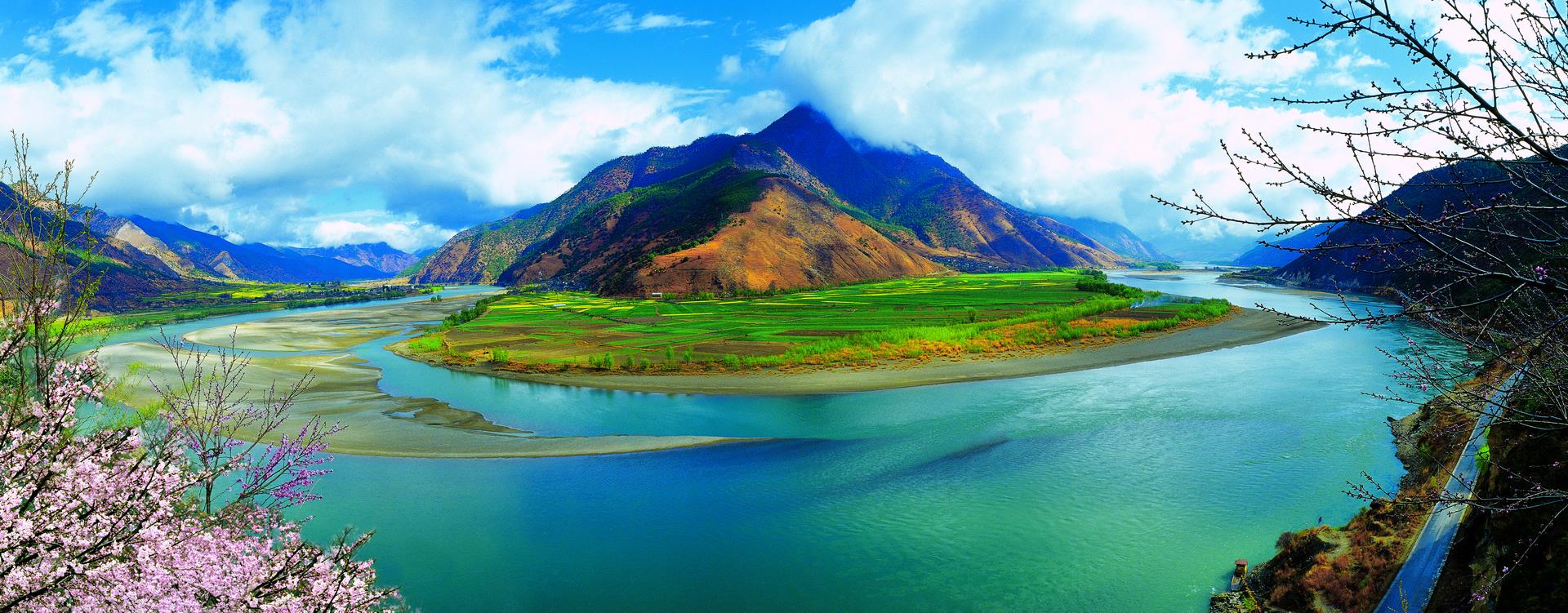






In Nujiang, located in northwestern Yunnan province, there’s a beautiful highway that’s become a popular hotspot for worldwide tourists.
Considered as one of China’s most biodiverse regions, Nujiang has been dubbed the last border in Yunnan tourism. The 300 kilometre, 4000 metre-deep unspoilt valley runs from the Chinese towns of Liuku to Bingzhongluo. It follows the Nujiang River and boasts some unique treasures.
Here, the snaking Nujiang River brings a wild, powerful presence to the lush green landscapes. Its rapids are a constant throughout the long, windy drive, from the Valley’s beginning until its end.
The Nujiang Valley (and the Nujiang Lisu Autonomous Prefecture that spans it) sit on the border of Myanmar, China and Tibet. It is a multicultural, multi-faith valley, harmoniously co-inhabited by Tibetans, Lisu, Nu and Dulong ethnic communities, as well as an increasing number of Han Chinese people.
With over 98 percent of the land covered with mountains, valleys and rivers, transportation infrastructure has long been on the region's development agenda but, in practice, such projects have been hard to implement on the ground. However, in 2019, a highway came along stretching almost 300 kilometres.
Starting in the Liuku town in Lushui City, the road crosses Fugong County and ends in Bingzhongluo town, located in Gongshan Dulong Autonomous County.
The Nujiang road is not for high-speed lovers. It’s designed to enjoy nature, at a speed of no more than 40 kilometres per hour.
All the way along the road, there are slow-moving lanes for riders, walkers and sightseers to enjoy the beautiful landscapes as well.
You can also find running tracks and hot springs, in case you need to refresh, and scan a QR code in the highway service area to ride a shared bike.
This road has unleashed a new life for this area, making it a lot easier for tourism groups and buses to drive directly into towns and villages, whilst benefiting over 300,000 locals along the way.
Main Attractions
1. The First Bend
The First Bend of the Nujiang River is a must-see spot. The Yangtze River is blocked by Hailuo Cliff, forcing it into the path of least resistance, which causes it to turn sharply to the right, towards the south.
Then when it comes to the end of the cliff it turns back left, toward the north, creating a V-shaped turn of close to 180 degrees as it finds its way around. Then it heads back toward the northeast.
2. The Nujiang Grand Canyon
Nujiang is known for its deep canyons along the Dulong, Nujiang and Lancang rivers that run longitudinally and almost parallel through the Nujiang Valley. The Three Parallel Rivers of Yunnan Protected Areas have been named a UNESCO World Heritage Site.
The most spectacular of the gorges surrounding the rivers is the Nujiang Gorge, which cuts through 600 kilometres (nearly 400 miles) of Yunnan Province.
The landscape throughout the gorge area is beyond spectacular, with towering mountain peaks, ancestral forests, rapid rivers and enchanting seasonal snow covers.
With picturesque lofty mountains, virgin forests, river rapids and snowscape during spring and the winter, the gorge is the one of the world’s most breathtaking places.
3. Bingzhongluo
Located at the border of Gongshan Autonomous County and Tibet, Bingzhongluo township is referred to as the Shangri La of Nujiang Prefecture.
It is homeland of Nu, Lisu, Tibetan and Dulong ethnic minorities. Ancient religions coexist here alongside Lamaism and Christianism. Visitors say the pastoral town of Bingzhongluo makes a place where “man and God live together.” Everyone visiting the area is blessed with a unique vibe of tranquility.
Nujiang Lisu Autonomous Prefecture, Yunnan Province, China
(云南省怒江傈僳族自治州)
1. Transportation:
Bus: Visitors can take direct buses from Kunming to Liuku Town or Gongshan County of Nujiang. Flights are also available to Dali (8h to Liuku) or Baoshan (4h to Liuku) and can then be combined with a bus change to reach Liuku.
2. Best times to visit: from October to April.
3. Experience: hiking and exploring the Arcadia of China's ethnic minorities, or discovering unforgettable views.













